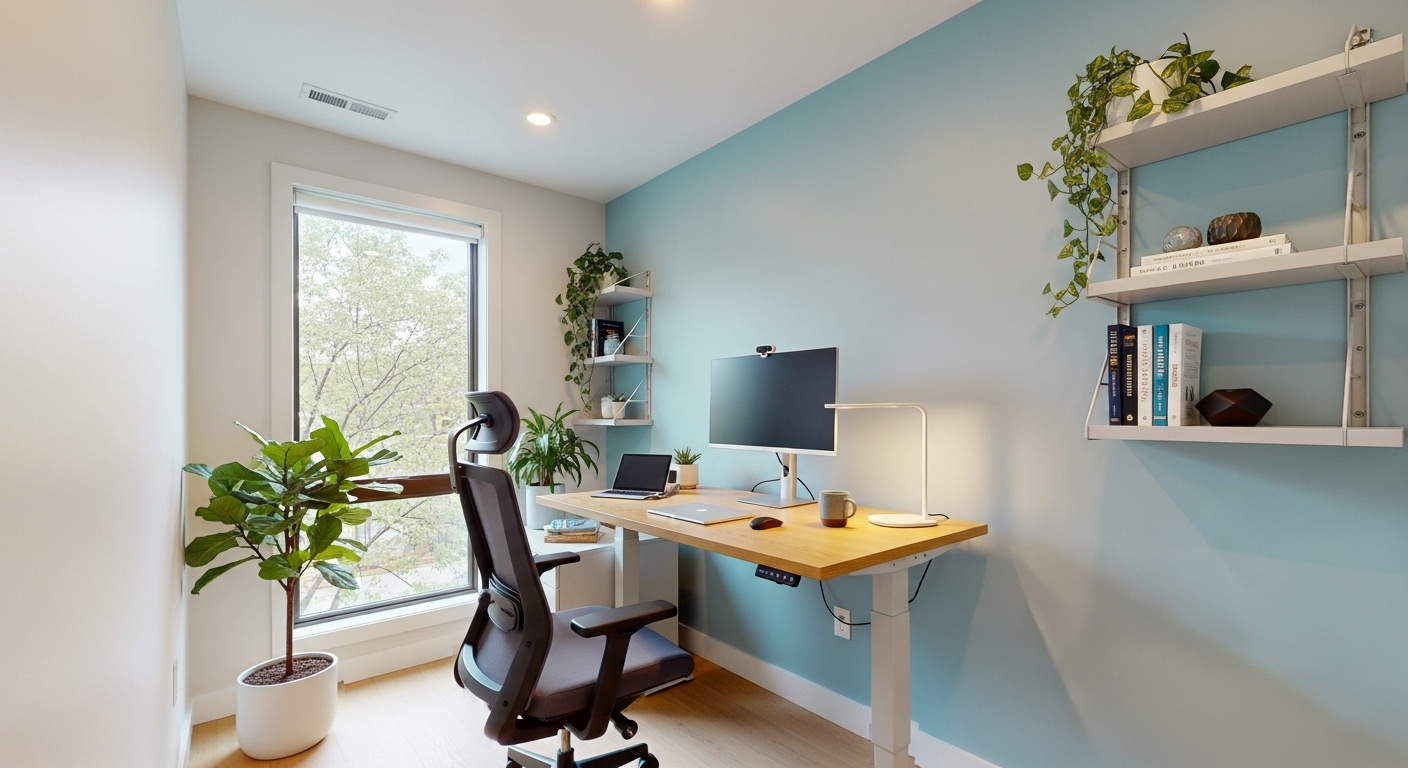In the bustling landscape of a world-class city, the modern professional faces a distinct challenge: how to harness vibrant, collaborative energy without sacrificing the deep, focused work required for excellence. Coworking spaces, with their promise of community, flexibility, and premium amenities, have become the new frontier for productivity. Yet, this environment is a double-edged sword. The very buzz that fuels creativity can also become a source of constant distraction. This guide is designed for the ambitious professional who wants to master their environment, not be mastered by it. We will explore a strategic framework for transforming a shared workspace into a personal productivity sanctuary. From architecting your physical and digital boundaries to structuring your day for optimal flow, these actionable strategies will help you unlock peak performance and thrive amidst the dynamic energy of the city’s professional scene, turning potential chaos into a powerful catalyst for success.
Architecting Your Environment: Choosing the Right Space for Deep Work
The foundation of coworking productivity lies in a decision made before you even open your laptop: selecting the right space. Not all coworking environments are created equal, and their design philosophy directly impacts your ability to focus. A space geared towards social startups with an open floor plan, constant events, and a loud, bustling common area might be perfect for networking but detrimental to deep work. Conversely, a space that prioritizes a ‘library’ atmosphere might stifle necessary collaboration. The key is to find a workspace that offers a spectrum of environments. Look for facilities that feature designated quiet zones, soundproof phone booths for calls and virtual meetings, and private offices available for hourly or daily rental. These ‘zones of focus’ are critical escape hatches from the ambient social energy. Before committing to a membership, take a tour during peak hours—typically mid-morning and mid-afternoon. Observe the noise levels, the general etiquette of other members, and the availability of these quiet spaces. Does the culture respect the use of headphones as a ‘do not disturb’ sign? Is there a clear separation between collaborative areas and heads-down workstations? Your productivity is an asset; invest it in an environment designed to protect it. A well-chosen space acts as the first line of defense against distraction, providing the architectural support you need to build a productive workflow.
The Boundary Blueprint: Setting Social and Digital Perimeters
Once you’ve chosen your space, the next layer of control involves setting firm personal boundaries. In a coworking environment, you are your own gatekeeper. The most visible and effective tool is a good pair of noise-canceling headphones. They serve a dual purpose: blocking out auditory distractions and acting as a universal visual cue that you are in a state of focused work. However, boundaries extend beyond hardware. You must learn the art of the polite but firm ‘no.’ When a fellow member approaches for a casual chat while you’re in the middle of a complex task, have a go-to phrase ready, such as, ‘I’d love to catch up, but I’m on a tight deadline right now. Can I find you around lunchtime?’ This acknowledges the social contract of the space while protecting your immediate focus. Digital boundaries are equally crucial. Resist the urge to keep your email and Slack notifications on permanently. Schedule specific ‘communication blocks’ throughout your day to check and respond to messages. Outside of these blocks, turn off notifications to prevent constant context-switching, which is a known productivity killer. By consciously managing both physical and digital access to your attention, you create a protective bubble that allows for sustained periods of concentration, transforming a potentially distracting open office into a controlled and efficient workspace.
Time-Blocking and Task Batching: Structuring Your Day for Success
A reactive approach to your workday is the enemy of productivity. Instead of tackling tasks as they appear, proactively structure your day using proven methodologies like time-blocking and task batching. Time-blocking involves dividing your day into distinct blocks of time and assigning a specific task or group of tasks to each block. For example, 9:00-11:00 AM could be dedicated to ‘Deep Work on Project X,’ 11:00-11:30 AM for ‘Email and Slack Response,’ and so on. This method eliminates the guesswork of ‘What should I do next?’ and forces you to be realistic about how long tasks will take. Task batching complements this perfectly. It’s the practice of grouping similar tasks together and executing them in one dedicated block. For instance, instead of answering emails sporadically throughout the day, you handle them all at once. Instead of making three separate calls at different times, you schedule a ‘Calls’ block. This approach is powerful because it minimizes ‘cognitive load’—the mental effort required to switch between different types of tasks. Every time you shift from writing a report to answering an email to making a phone call, your brain has to reorient itself, wasting precious time and energy. By batching tasks, you remain in a single cognitive mode for longer, leading to higher efficiency, better quality work, and a preserved state of flow.
Leveraging Amenities without Losing Momentum
One of the primary attractions of coworking spaces is the rich array of amenities: artisan coffee, snack bars, wellness rooms, and networking events. While these perks enhance the work experience, they can also be insidious productivity traps if not managed strategically. The key is to treat amenities as rewards and scheduled breaks, not as constant temptations. Instead of making multiple trips to the coffee machine whenever you feel a slight dip in energy, integrate it into your time-blocking schedule. A 15-minute coffee break after a 90-minute deep work session can be a powerful way to reset and recharge. The same principle applies to social events. Don’t let a spontaneous happy hour derail a crucial afternoon of work. Check the community calendar in advance and decide which events align with your networking goals and schedule, then plan your workday around them. The unique professional ecosystem in Chicago means that coworking spaces offer world-class facilities; using them wisely is paramount. Think of your willpower as a finite resource. By creating a structure for how and when you engage with amenities, you conserve that mental energy for your most important tasks, ensuring that the perks of your workspace serve your productivity rather than sabotage it.
The Mental Game: Cultivating a Mindset for Focused Work
Ultimately, productivity is an internal game. Your mindset is the operating system that runs all the strategies and techniques you deploy. Cultivating a focus-oriented mindset begins before you even arrive at your coworking space. Develop a ‘pre-work ritual’ that signals to your brain it’s time to concentrate. This could be a short walk from the train station, listening to a specific playlist on your commute, or a five-minute mindfulness exercise at your desk before opening your laptop. This ritual creates a clear psychological transition from ‘home life’ to ‘work life,’ which is especially important for freelancers and remote workers who may lack the traditional structure of a corporate office. During the day, practice single-tasking. The myth of multitasking has been thoroughly debunked; it’s merely rapid task-switching that exhausts your brain and degrades the quality of your work. Commit to seeing one task through to completion before moving to the next. When you feel your focus waning, don’t just push through. Take a deliberate, short break—walk a lap around the office, stretch, or look out the window. This allows your brain’s prefrontal cortex to recover. By treating your focus as a muscle that requires warm-ups, deliberate exercise, and recovery, you build the mental stamina required to perform at a high level in a stimulating and dynamic environment.
Building Your Productivity Toolkit: Essential Tech and Gear
While mindset and strategy are paramount, the right tools can significantly amplify your ability to focus. Your personal toolkit should be tailored to combat the specific challenges of a shared environment. As mentioned, high-quality, over-ear noise-canceling headphones are non-negotiable. They are the single most effective investment for creating a personal bubble of tranquility. Consider pairing them with a focus-enhancing app or website that plays ambient sounds like rain or white noise to mask distracting conversations. Ergonomics also play a surprising role in sustained focus. A portable laptop stand and an external keyboard and mouse can prevent the physical discomfort that often leads to mental fatigue and a desire to quit working. On the digital front, use software to enforce your boundaries. Website blockers can be configured to prevent access to social media and news sites during your designated deep work blocks. The burgeoning tech scene in Chicago provides access to cutting-edge solutions, but sometimes the simplest tools are best. A simple timer app for implementing the Pomodoro Technique (25 minutes of work followed by a 5-minute break) can radically improve your output. Curating a simple, effective toolkit ensures you have the support you need to execute your productivity plan flawlessly, day after day.
Beyond the Desk: Integrating Networking and Collaboration Intelligently
The core advantage of a coworking space is the community. To truly master the environment, you must learn to tap into this collective energy without letting it overwhelm your personal workflow. This requires an intentional approach to networking and collaboration. Instead of leaving interactions to chance, schedule them. Designate specific times, such as your lunch break or the last hour of your day, for socializing and connecting with other members. When you need to collaborate on a project, don’t do it at your open-plan desk. Book a meeting room or find a designated collaboration zone. This respects the focus of those around you and creates a more professional and productive setting for your discussion. Be a proactive but respectful community member. If you see someone with headphones on, send them a Slack message instead of tapping them on the shoulder. The collaborative business environment that makes Chicago such a dynamic place to work thrives on this balance of connection and respect for individual focus. By being intentional about when and how you engage with others, you can build a powerful professional network, find collaborative partners, and gain valuable insights—all while safeguarding the time you need for focused, individual contribution.
Conclusion
Thriving in a coworking space is not about finding a magical formula; it’s about building a personalized system of intentional habits. It requires a conscious blend of environmental selection, boundary setting, and disciplined time management. By architecting your space, managing your social and digital perimeters, structuring your day, and leveraging amenities strategically, you can create an environment that fosters deep work and high-level output. The journey from distraction to focus is paved with consistent application of these principles. You must cultivate a resilient mindset and equip yourself with the right tools to support your goals. Productivity in this modern context is an active, ongoing practice. By embracing these strategies, the modern professional can transform the potential chaos of a shared workspace into a powerful engine for success. You can harness the vibrant energy of the community without sacrificing focus, allowing you to achieve your professional goals while being part of a dynamic and inspiring ecosystem. The Windy City’s hustle can be your tailwind, not a headwind, propelling you toward your greatest work.





